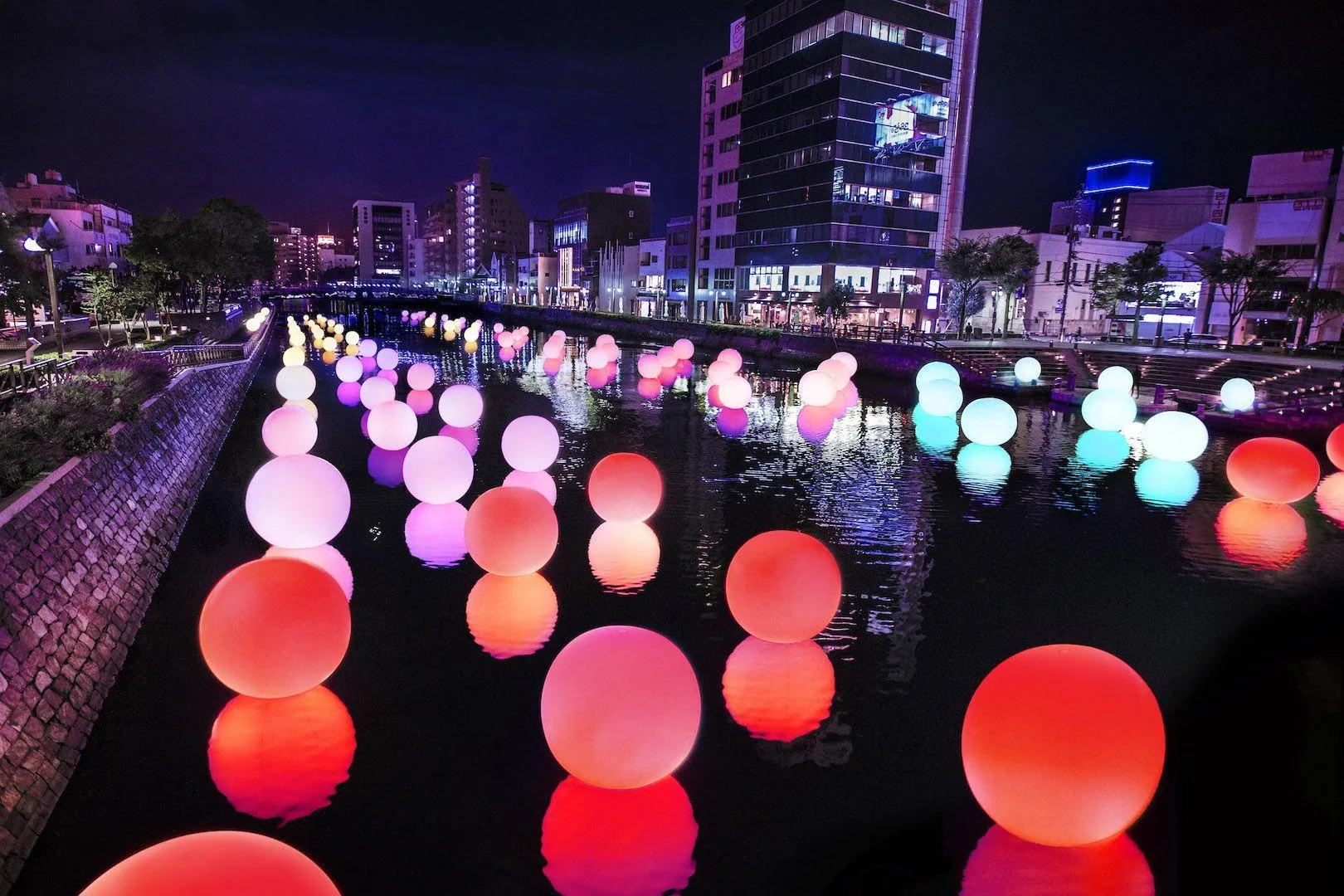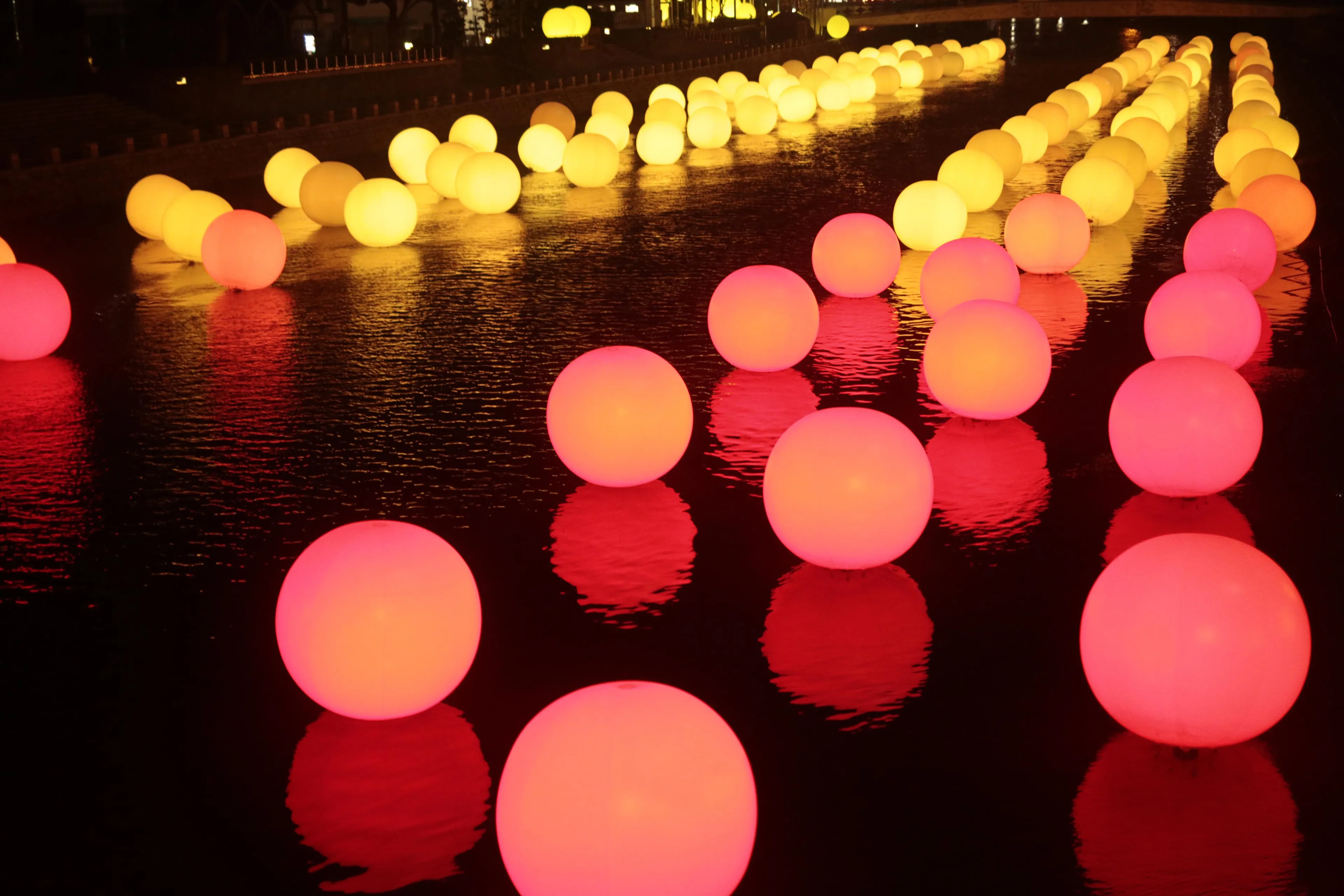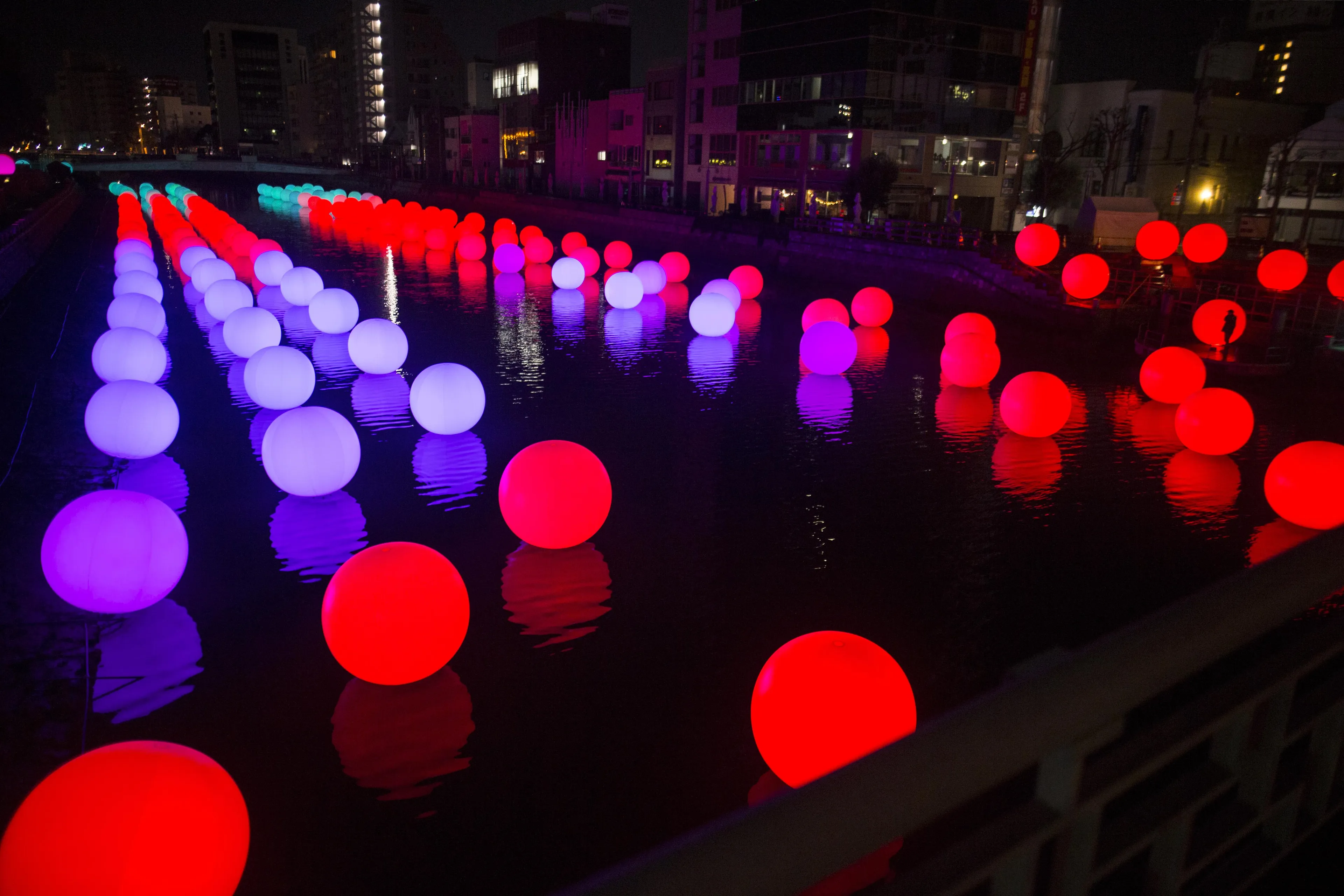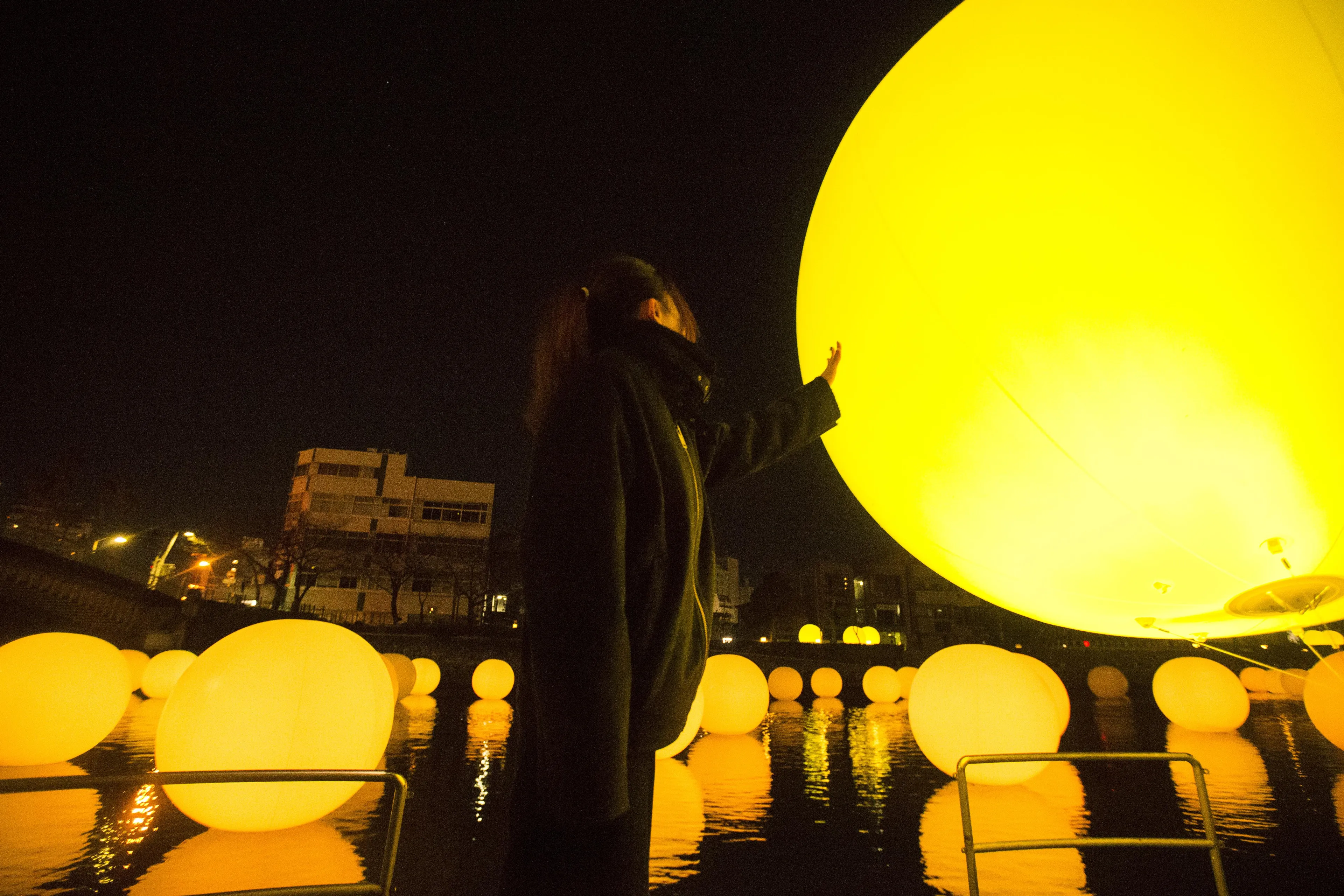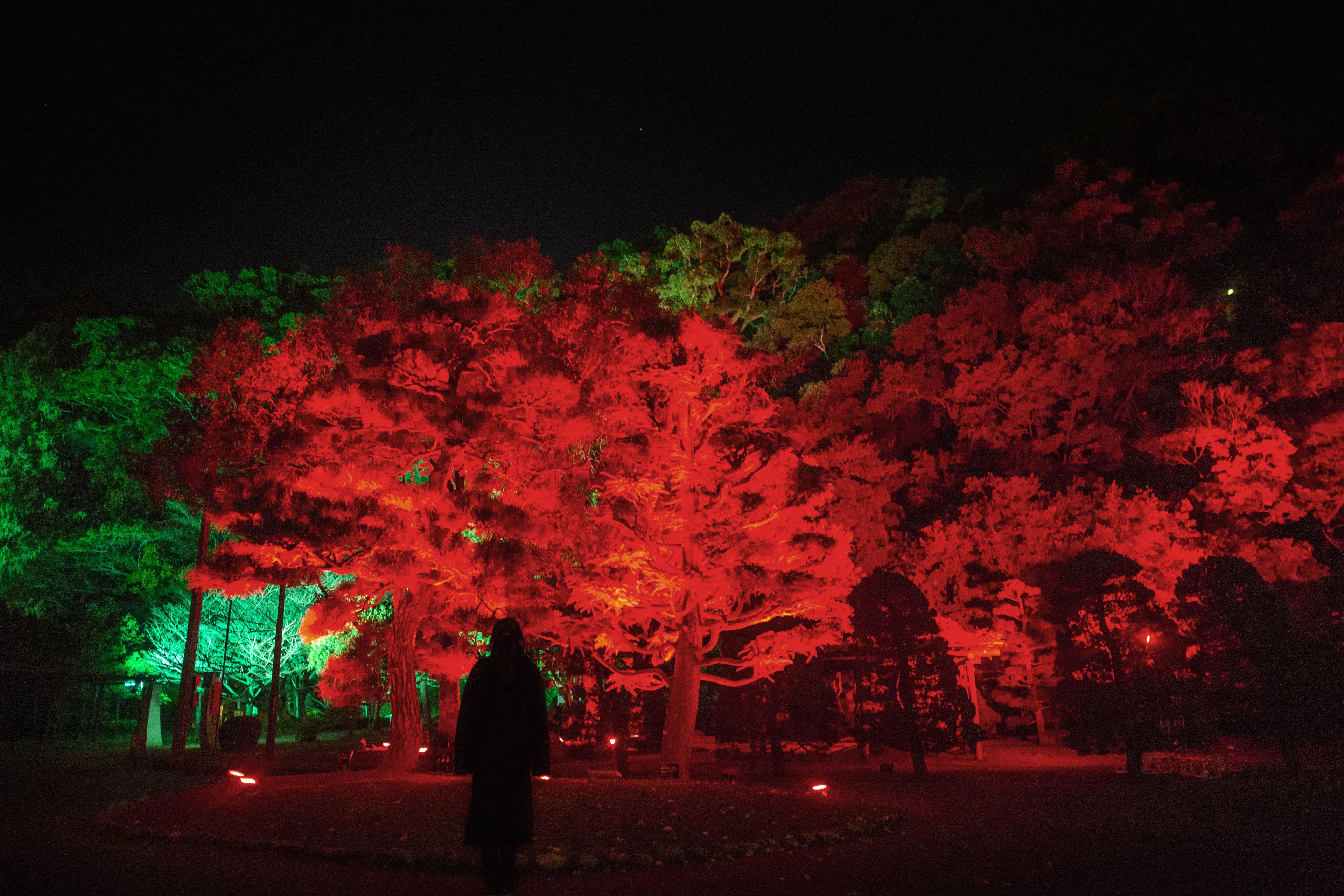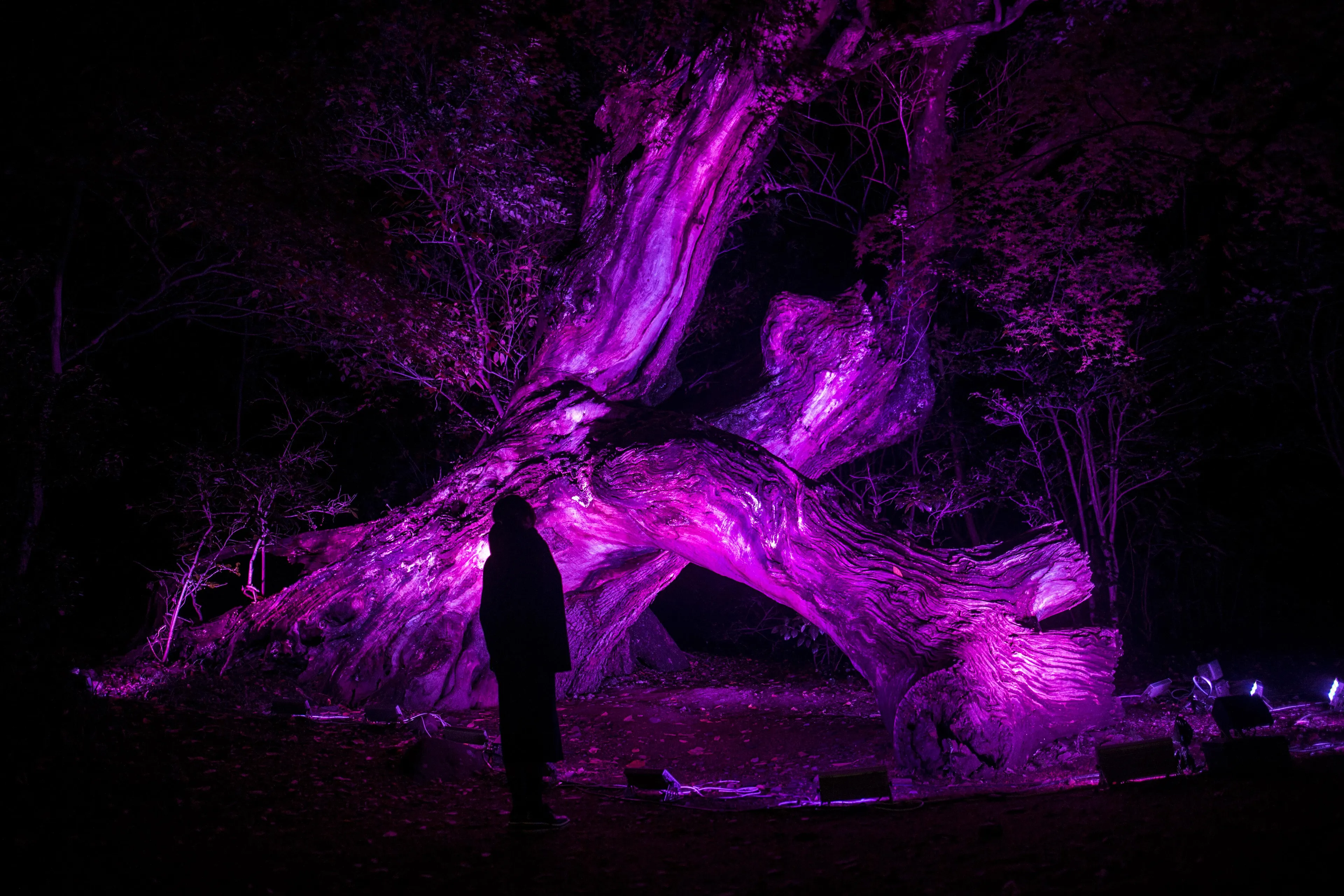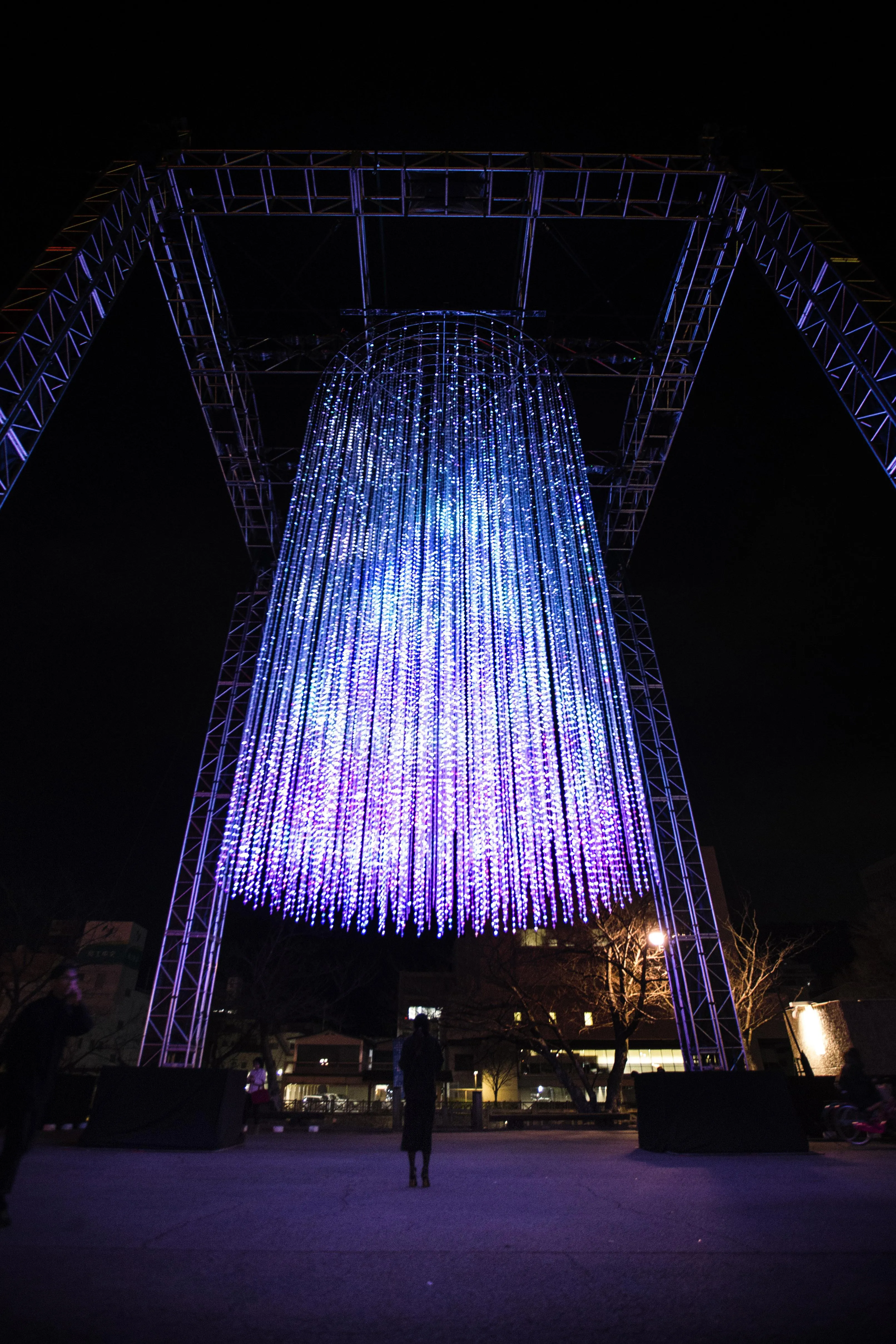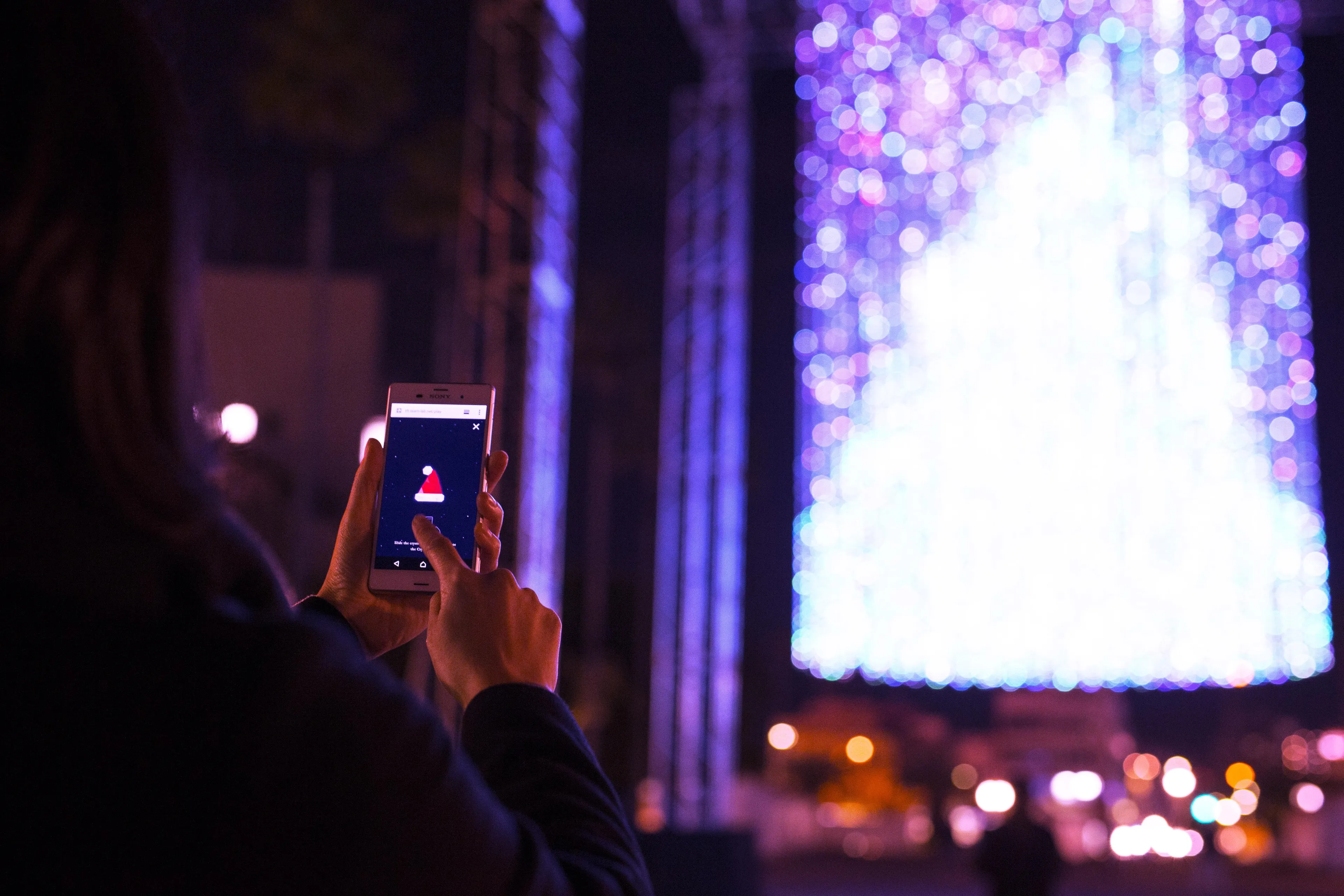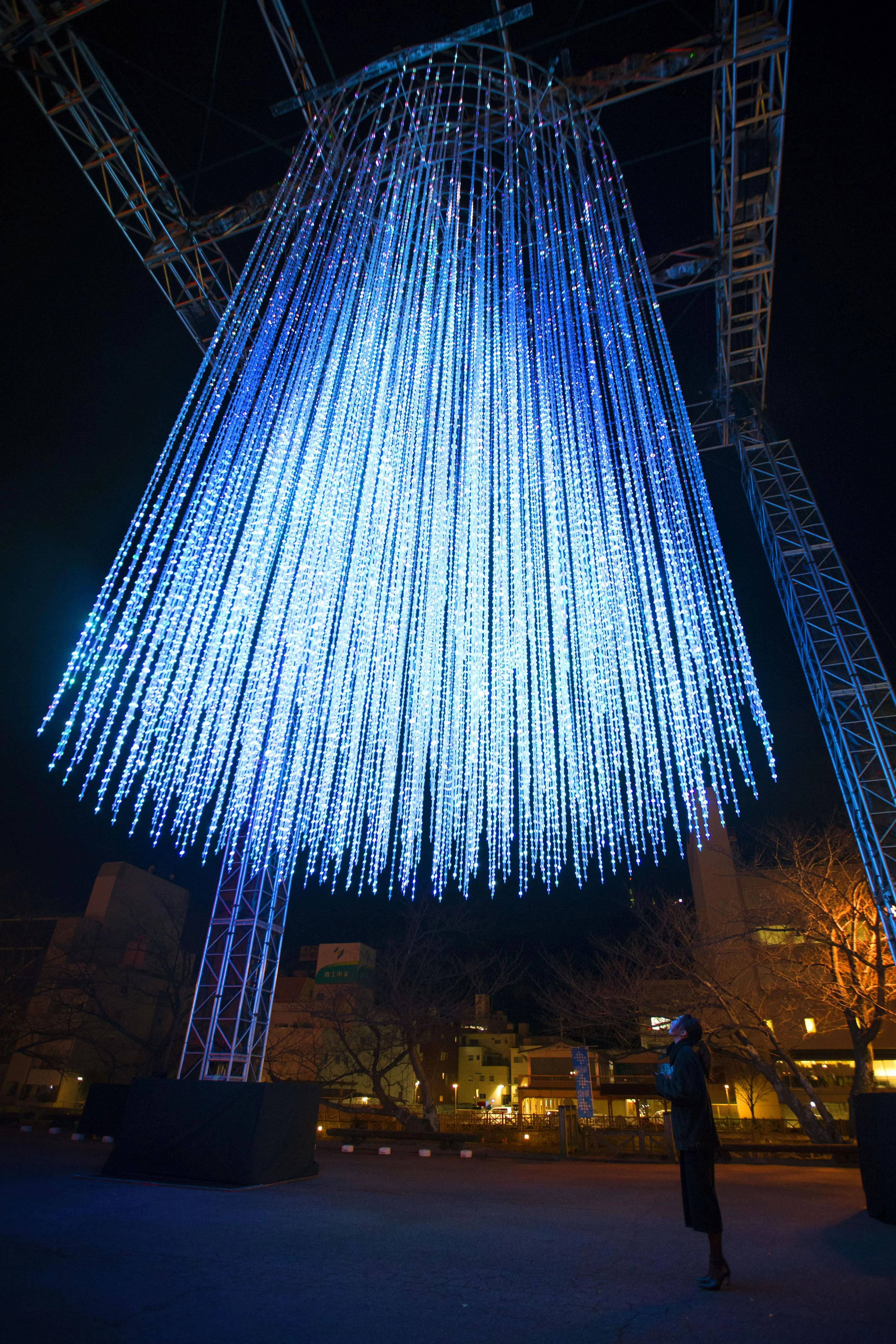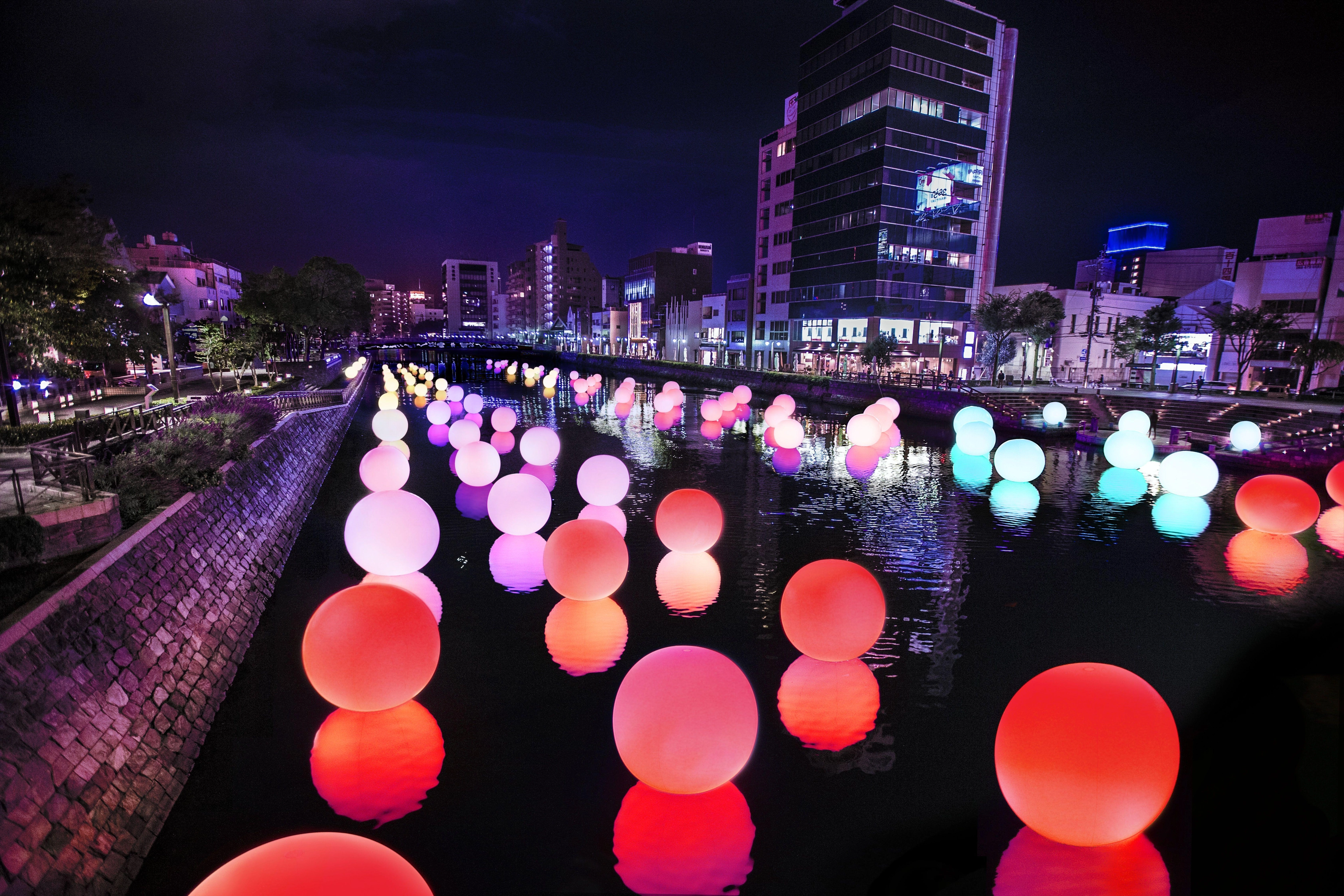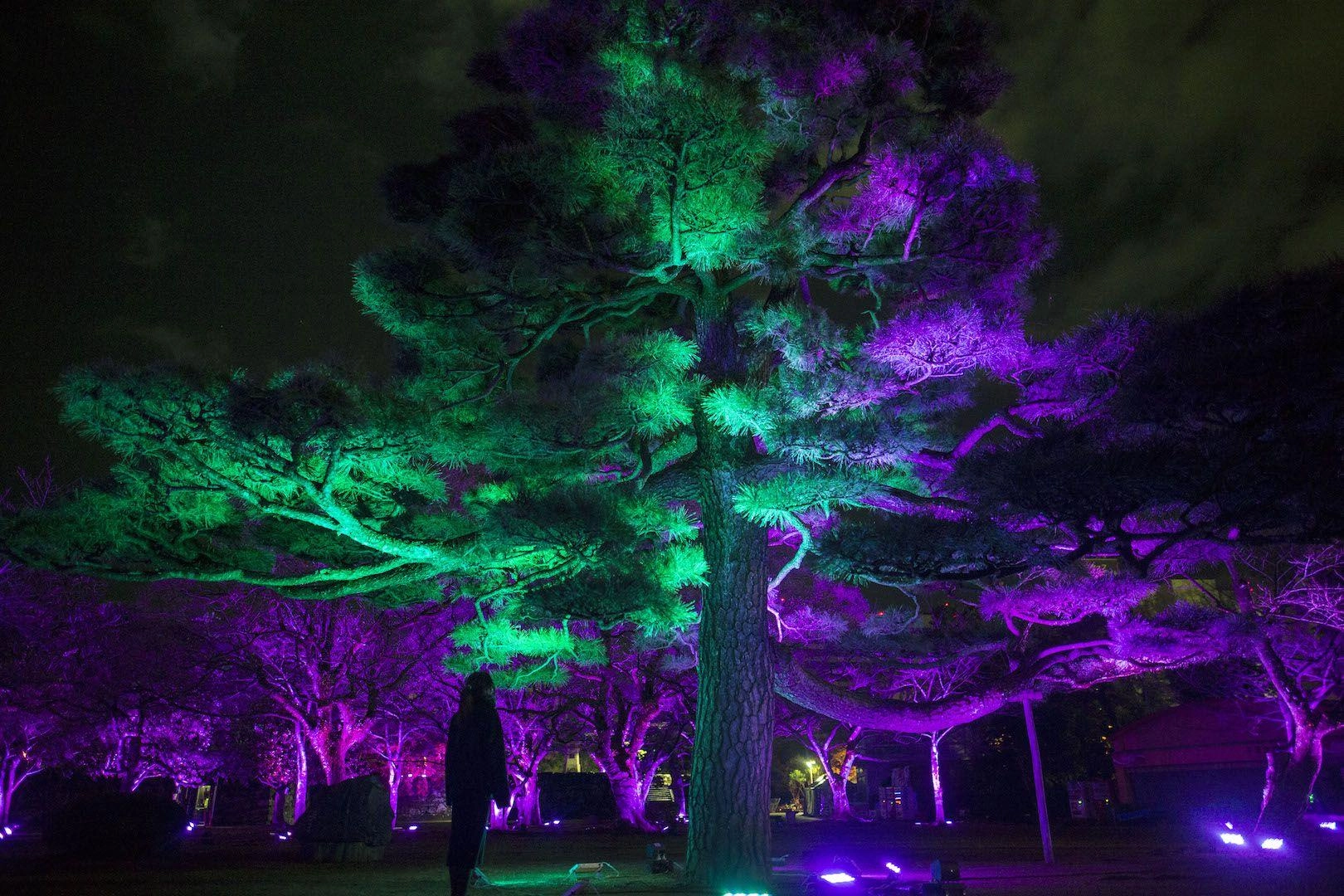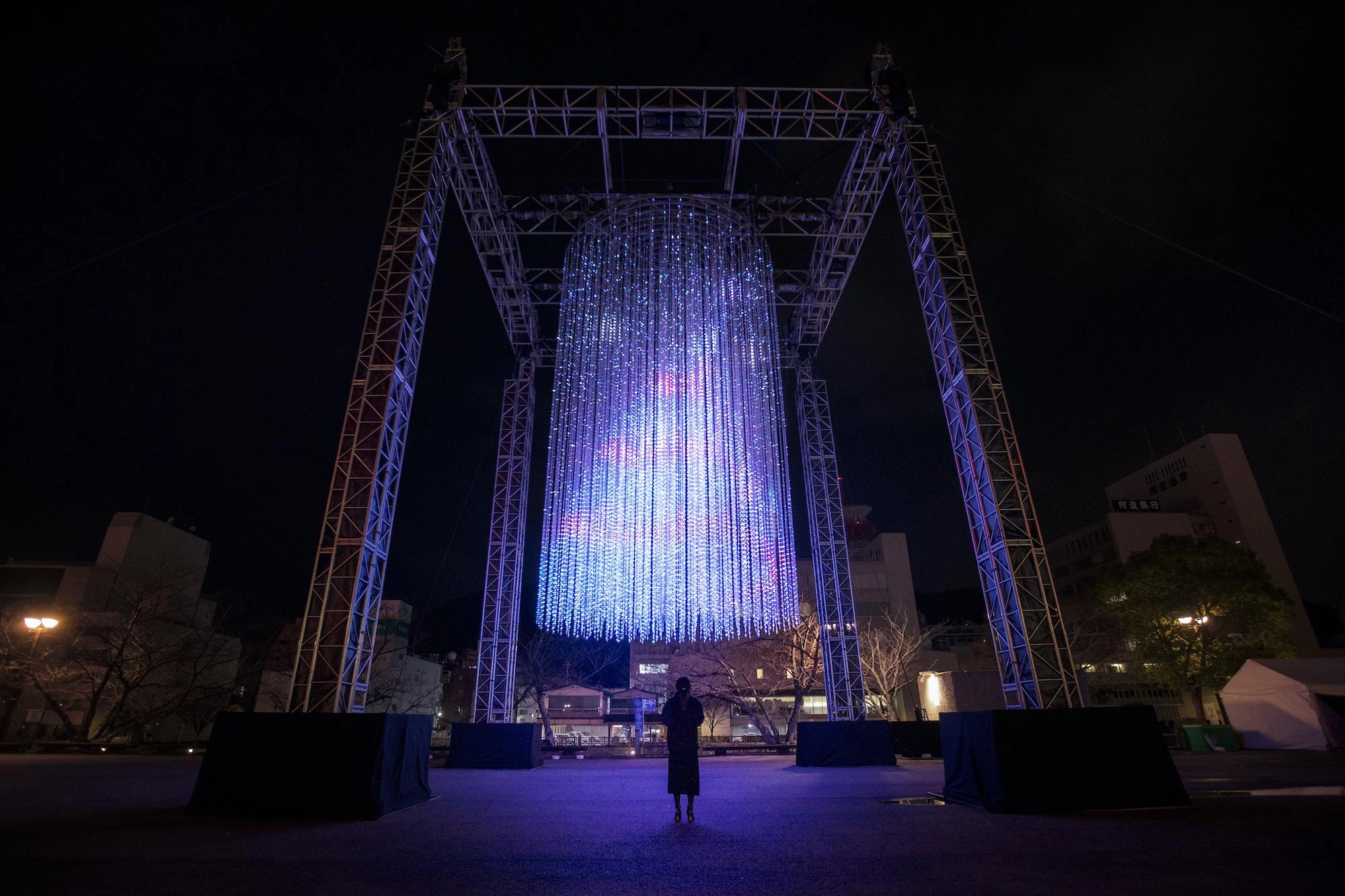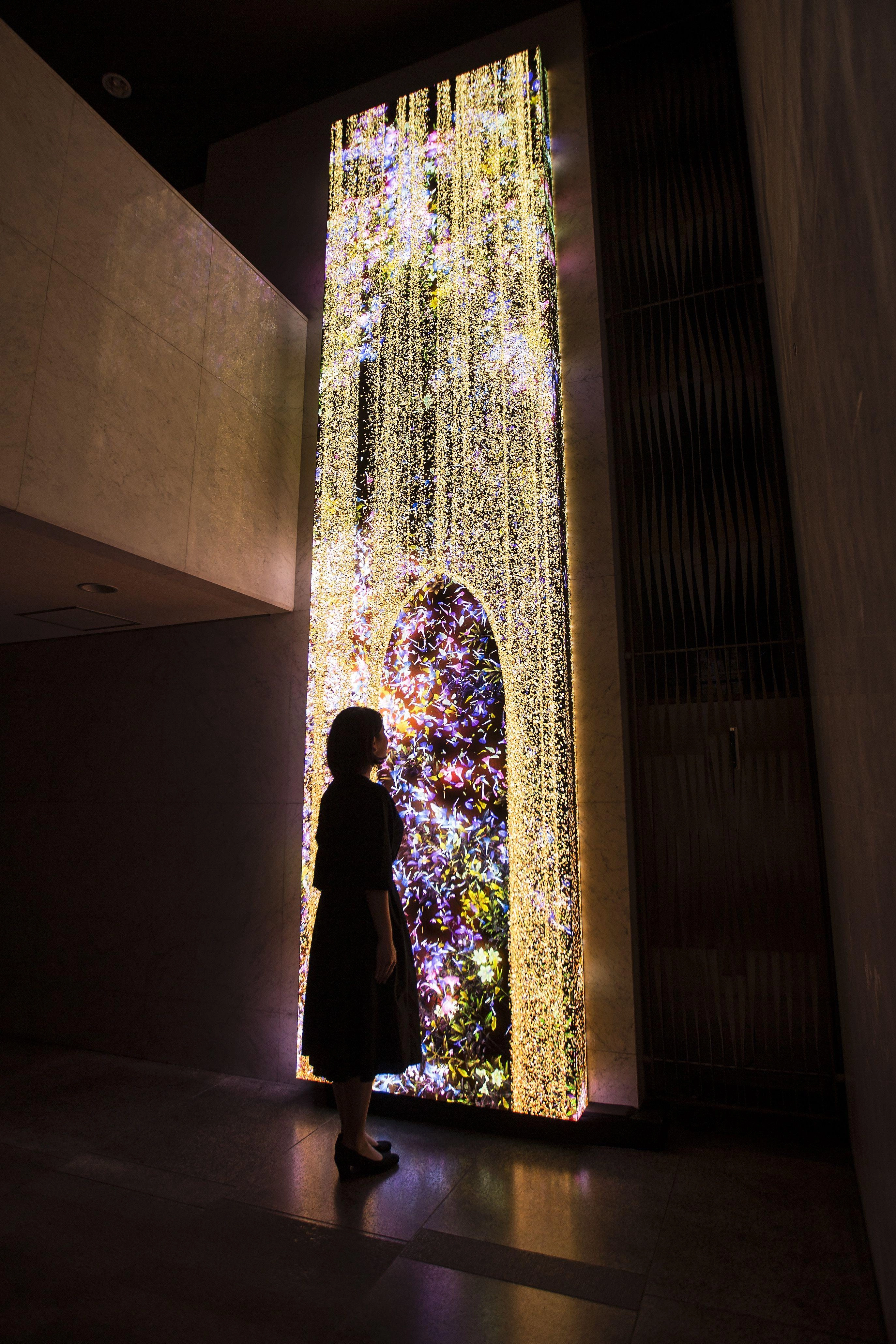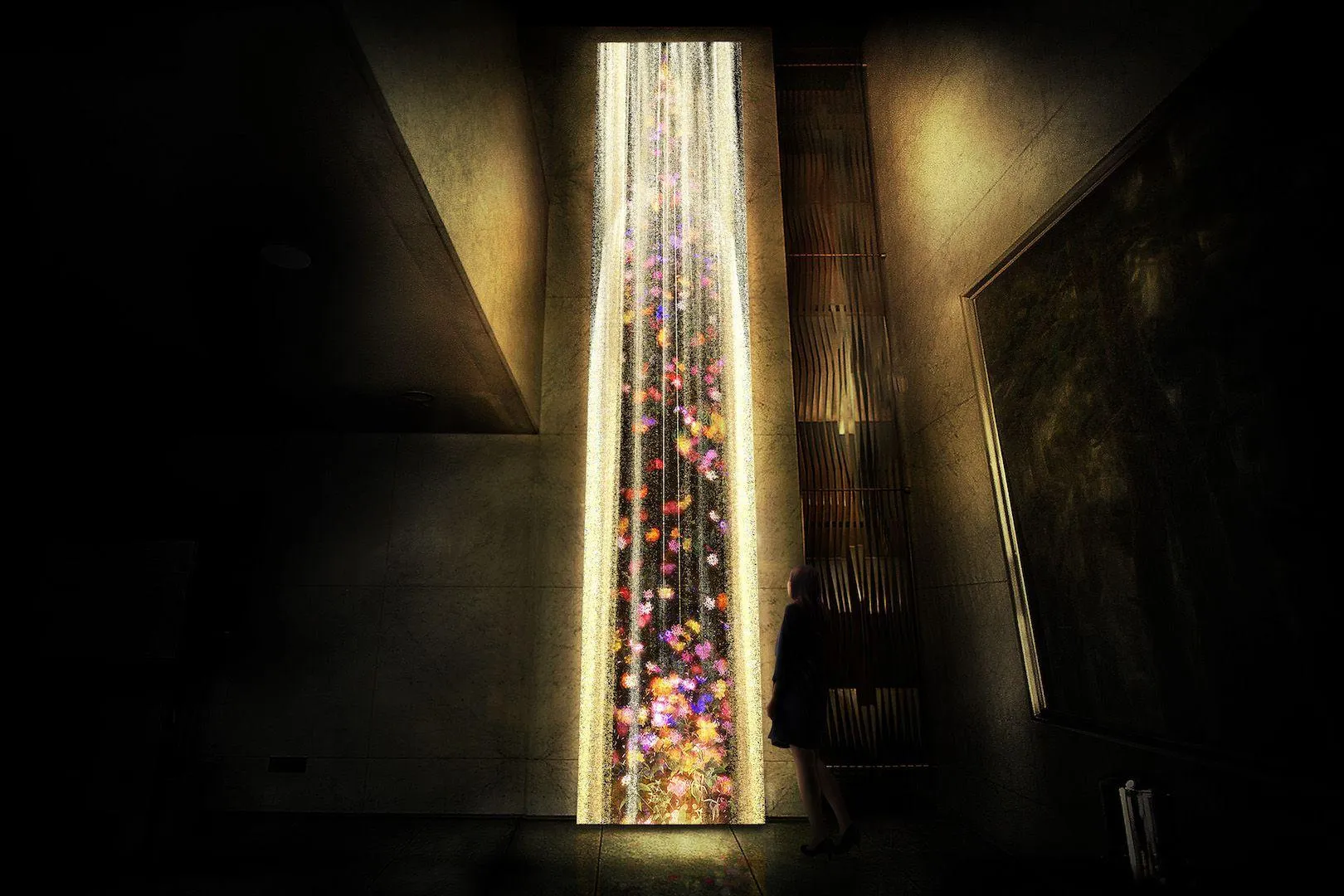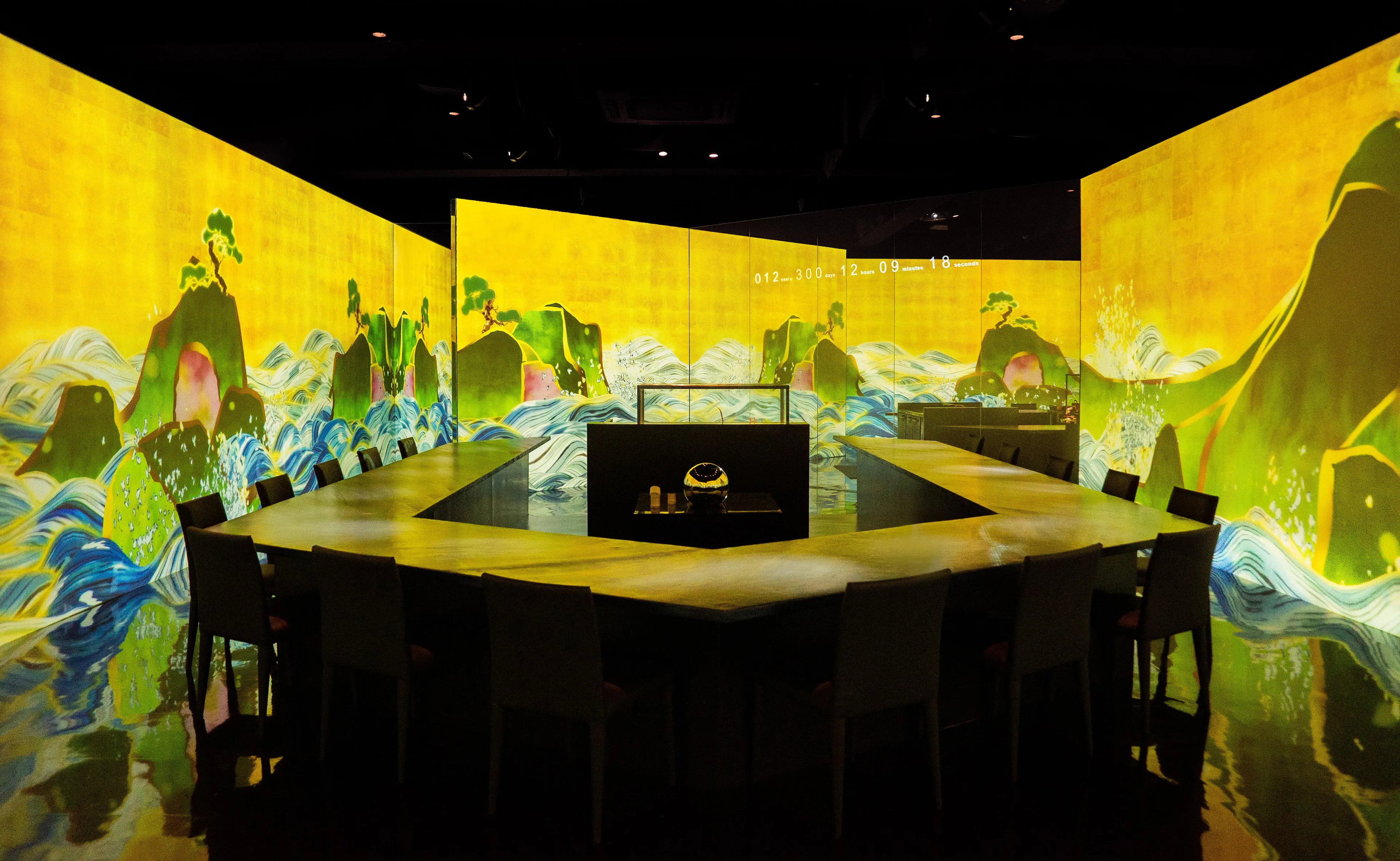Tokushima City is a city of water that is nurtured in the Yoshino River and flows through 138 rivers.
In the castle ruins of Tokushima Castle, in the center of town, there is the Shiroyama primary forest (a forest untouched by human hands). Areas of virgin forest such as this are very rare in Japan. Also located in the central area of town there is a very unusual and vast green belt, with a “dragon king” camphor tree that is 600 years of age, and 80 kinds of wild birds survive in the area.
Taking advantage of Tokushima City's natural beauty, we use light, sound, and digital technology, to transform the river and the forest in the center of the city into a digital art space that changes according to the existence of people.
There rural areas with wonderful geographical characteristics, places of historical interest, and places with unique cultures. Whilst these places are attractive to those with knowledge of them, they can be somewhat obscure for people without prior knowledge. There are aspects to them that may be considered boring for people of the modern age. However, if we can make use of the characteristics of these places, add new value and extend or expand them in some way, we think that such places have the potential to become as attractive as big cities. This is the concept behind the project called Digitized Nature, Digitized City.
Nature as it is becomes art, the city as it is becomes art.
Digital technologies that react to their surroundings and are networked are non-material, and like light and sound, they have no physical impact. By using digital technologies, nature can be turned into art without destroying nature. Furthermore, cities can be turned into art without changing anything physical, maintaining the infrastructure of the city.
No longer does art need to be exhibited in nature; rather nature itself becomes art.
Similarly art need not be exhibited in the city, but parts of the city itself can become art. We can then expand this concept, with an entire city becoming a huge artistic space without disruption to its normal functions.
teamLab uses digital art to influence the relationships between people in a space. By turning a city into digital art, it may be possible to stimulate positive relationships between people in the city.
